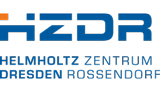Accelerator Mass Spectrometry and Isotope Research
Accelerator Mass Spectrometry and Isotope Research is a new Department with a research focus on studying our world by means of its isotopic signatures. We primarily use Accelerator Mass Spectrometry (AMS) for the detection of naturally or anthropogenically produced long-lived radionuclides. We offer our instruments to national and international users through a merit-access proposal submission system.
The Department operates the DREAMS facility – AMS based on a 6-MV tandem accelerator, which provides state-of-the-art capabilities for a number of AMS isotopes. We operate a secondary-ion mass spectrometer (SIMS, Cameca IMS 7fauto) which can be used as a standalone instrument or in combination with the DREAMS setup. SIMS is used for stable isotope measurements. Also a second dedicated AMS facility, HAMSTER, is presently being set up. HAMSTER is based on a 1-MV tandem accelerator featuring a new ion cooler with laser-based isobar separation as well as enhanced actinide measurement capabilities. This instrument will be used both in fundamental physics and in accelerator applications ranging from the environment and resources to astrophysics.
AMS has a strong scientific impact through its interdisciplinary character. Many different research areas are touched, among them atmospheric science, climatology, environmental science, oceanography, glaciology, geological applications, nuclear forensics, ice core research, astrophysics, cosmic-rays, meteorites or nuclear physics.


